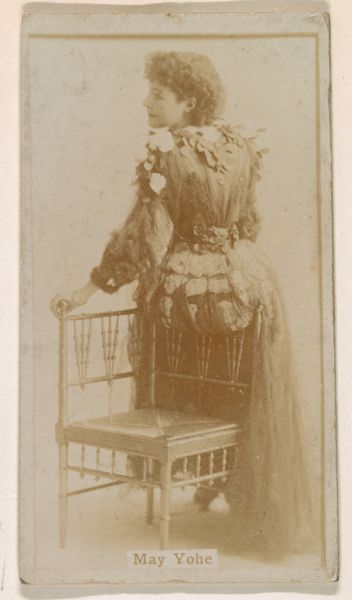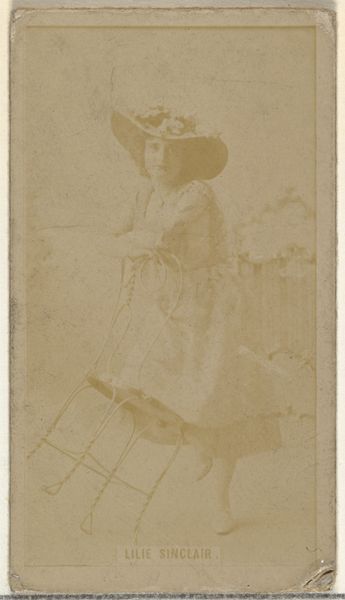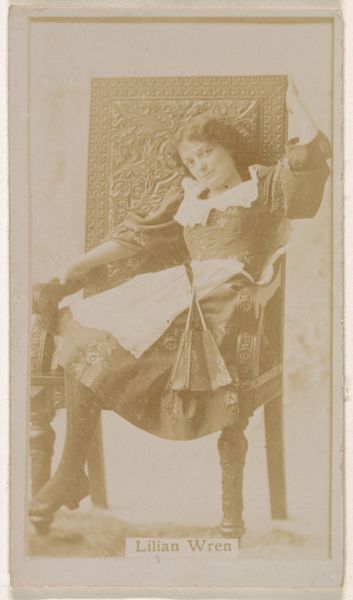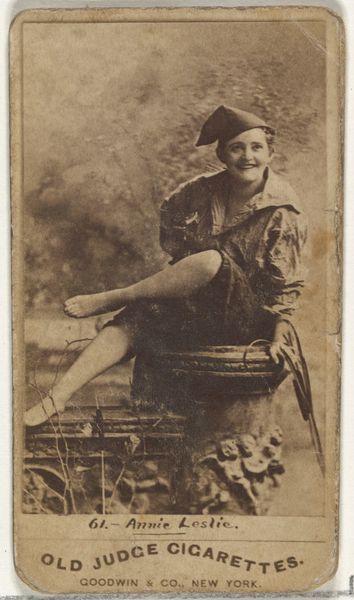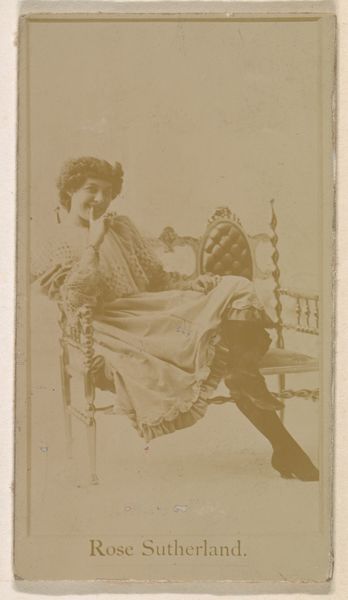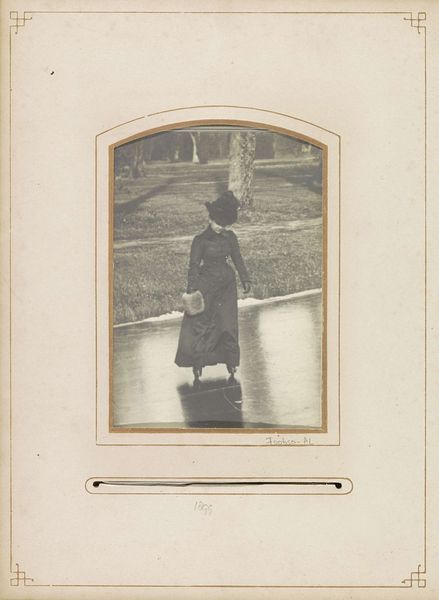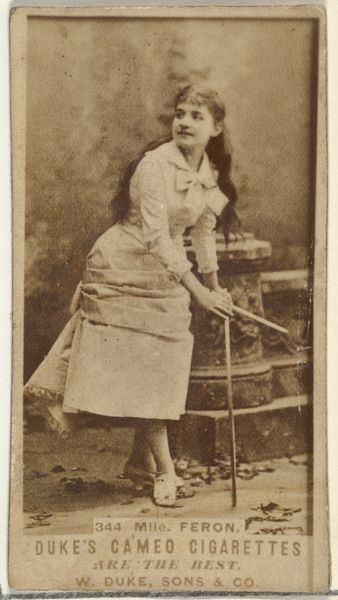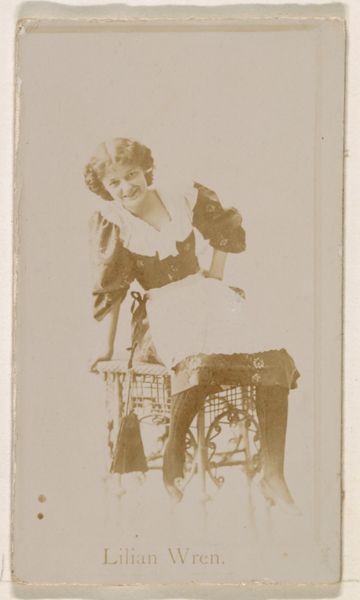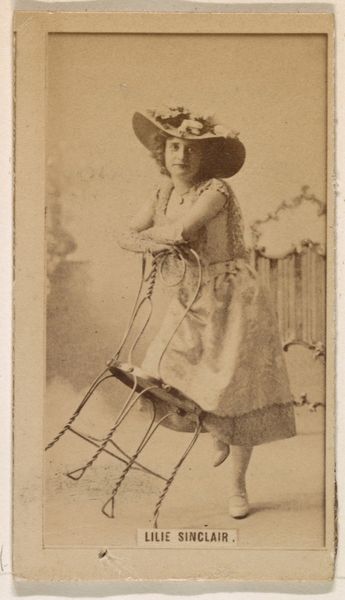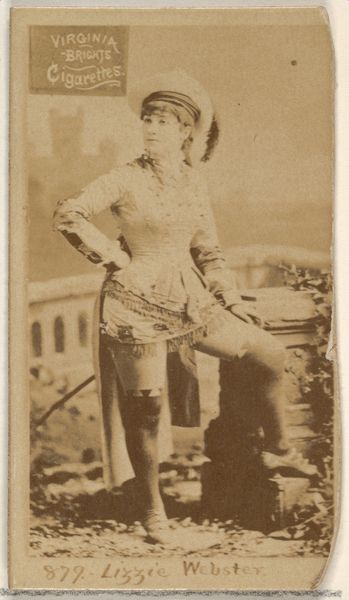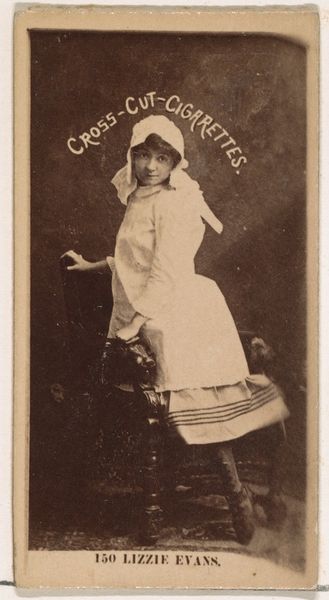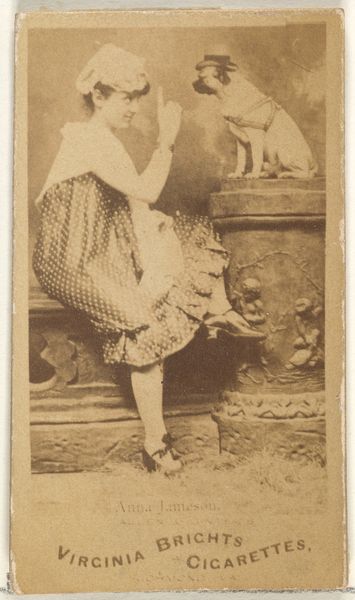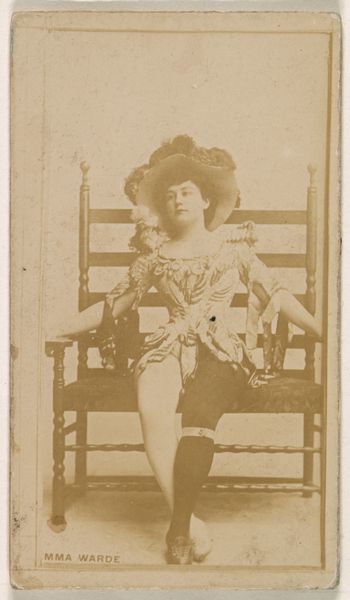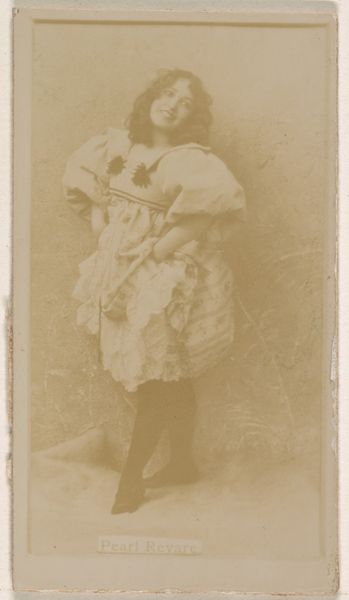
silver, print, photography, gelatin-silver-print
#
portrait
#
print photography
#
silver
# print
#
french
#
street-photography
#
photography
#
gelatin-silver-print
#
19th century
#
men
#
realism
Dimensions: 22 × 18 cm (image/paper)
Copyright: Public Domain
Editor: Here we have Eugène Atget's "Porteuse de pain," a gelatin silver print from around 1899 or 1900. There's a woman, likely a bread carrier, with her cart. What really strikes me is her somewhat weary expression. What do you see in this piece, beyond the surface representation? Curator: Absolutely, let's delve deeper. Atget’s photograph isn't just a street scene; it’s a snapshot of labor and gender in Belle Époque Paris. Note how this woman occupies public space with her work, challenging conventional notions of femininity confined to the domestic sphere. Consider how her position reflects the countless unseen women who fueled the city’s economy. Does the very act of photographing a working woman have any impact? Editor: That's a perspective I hadn't fully considered. I was more focused on the seemingly mundane subject matter. But, thinking about it, choosing to document her, and the labor, elevates its importance. It counters the art world’s focus on the bourgeoisie. Curator: Precisely! Atget’s work intersects with the emerging social consciousness of the time. Who gets represented, and how, becomes a powerful statement. Now, looking at the composition itself, how does Atget frame her? Does it empower or objectify? Editor: The framing feels quite neutral, almost documentary. It lacks the dramatic lighting or angles that might sensationalize her. She’s presented with dignity, even in her weariness. Curator: And that’s where the photograph gains its strength, its understated commentary on class, labor, and the role of women. We see her not as a romanticized figure, but as an individual navigating her reality. Editor: I see it now. It's not just a picture of a bread vendor; it’s a social statement about visibility and the everyday realities of working-class women. Curator: Exactly! Atget subtly prompts us to question who is seen, who is not, and the power dynamics embedded in representation itself. Hopefully it gives the audience a reason to be more curious about subjects and context when viewing any form of visual art.
Comments
No comments
Be the first to comment and join the conversation on the ultimate creative platform.

